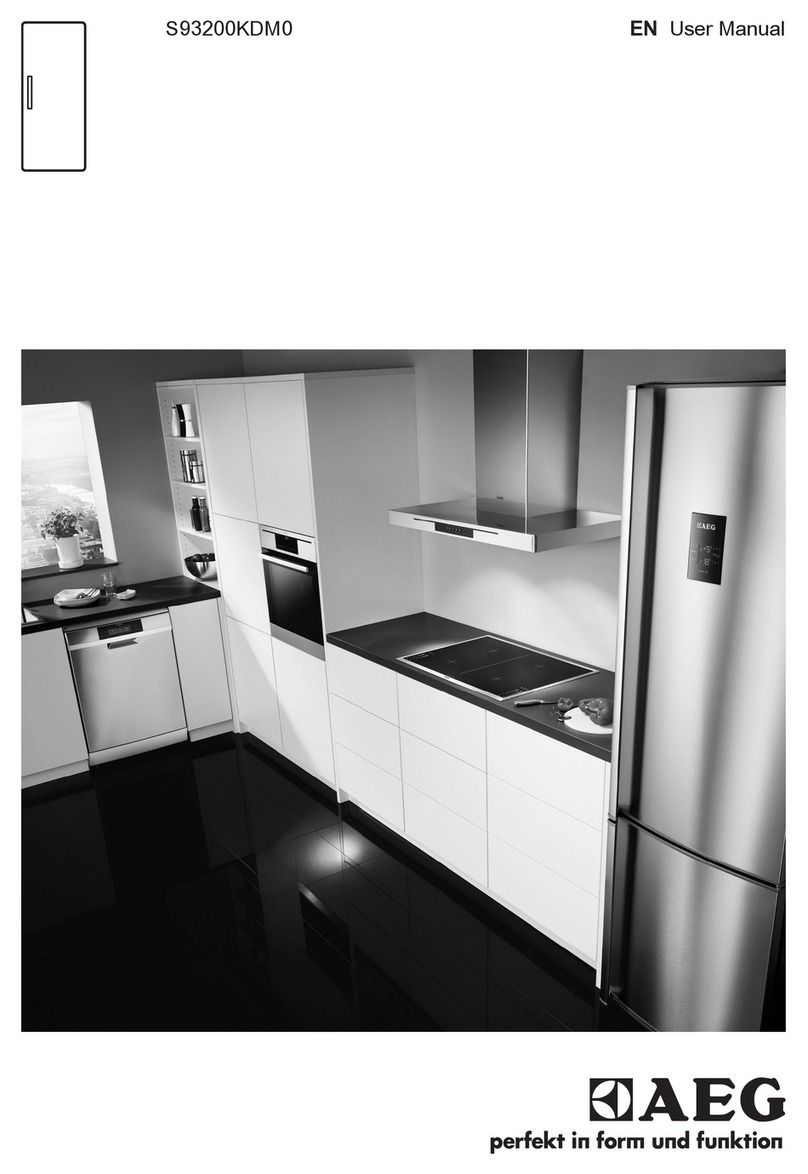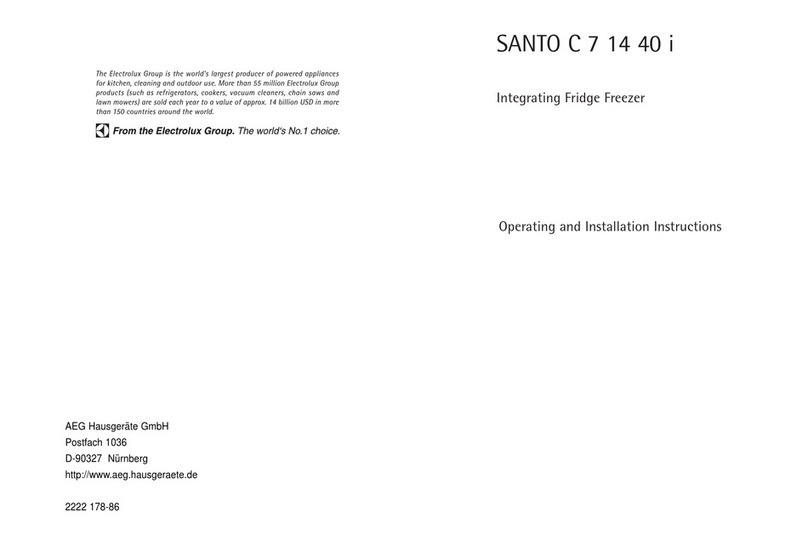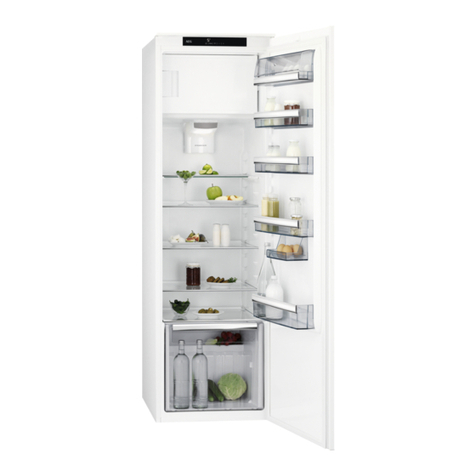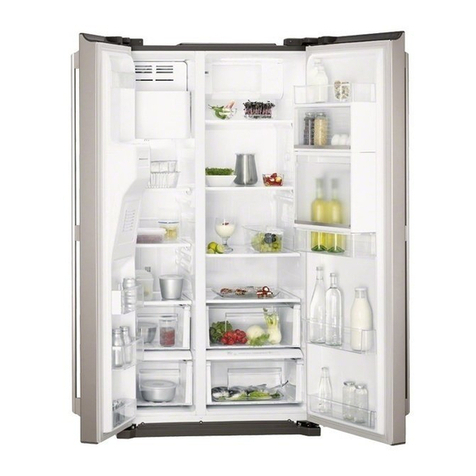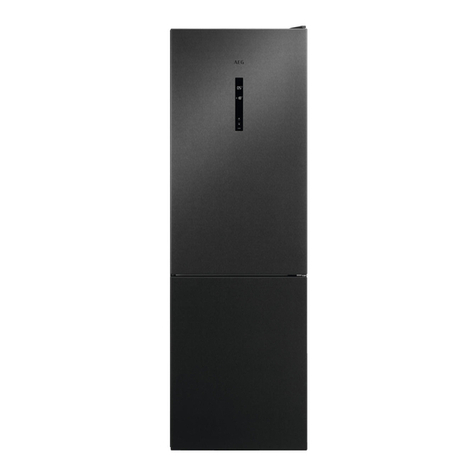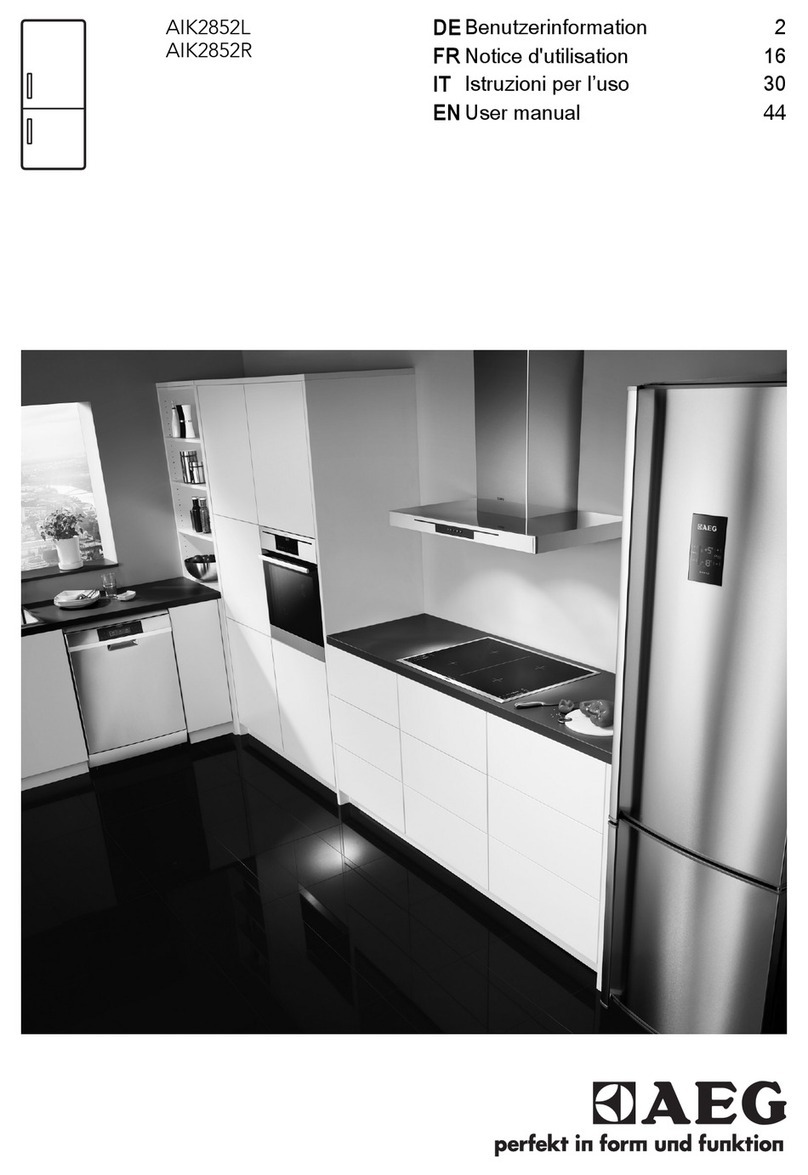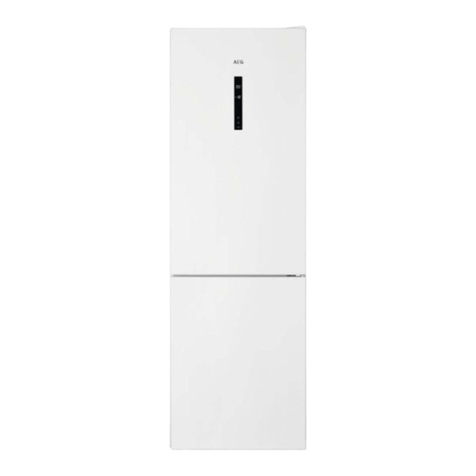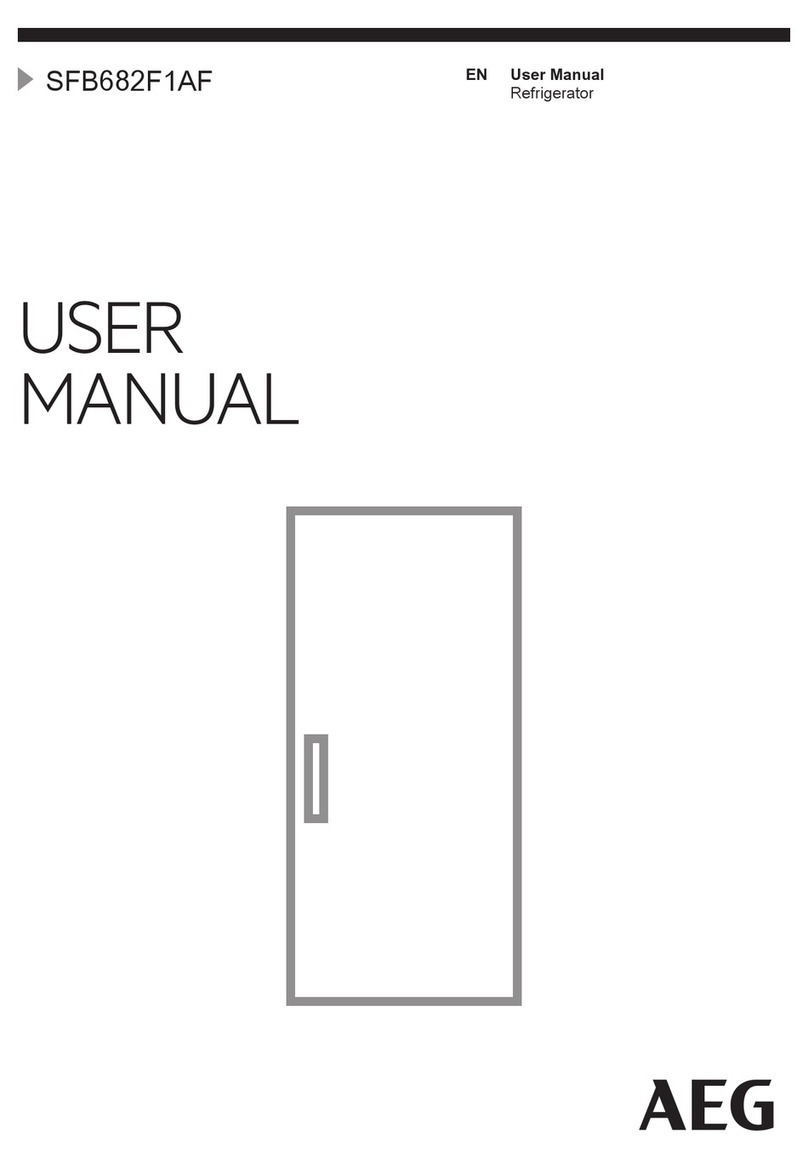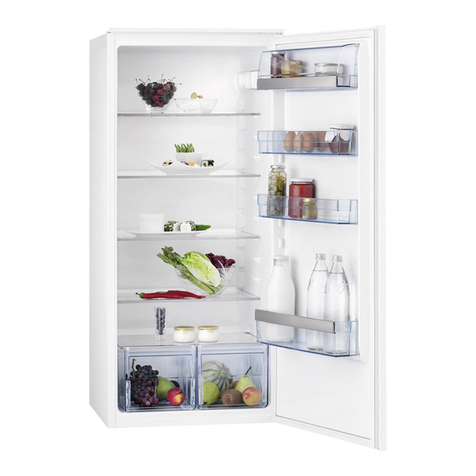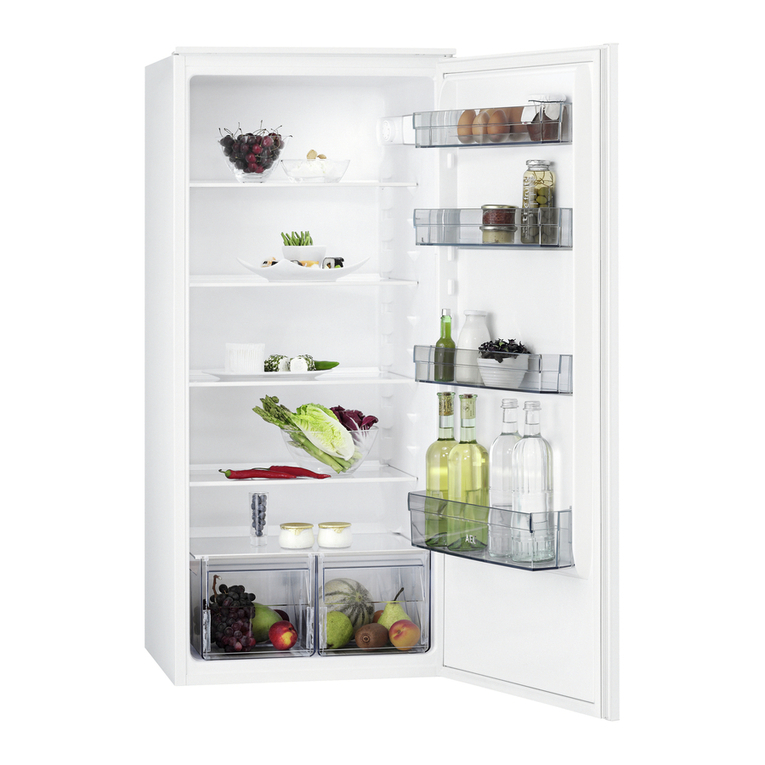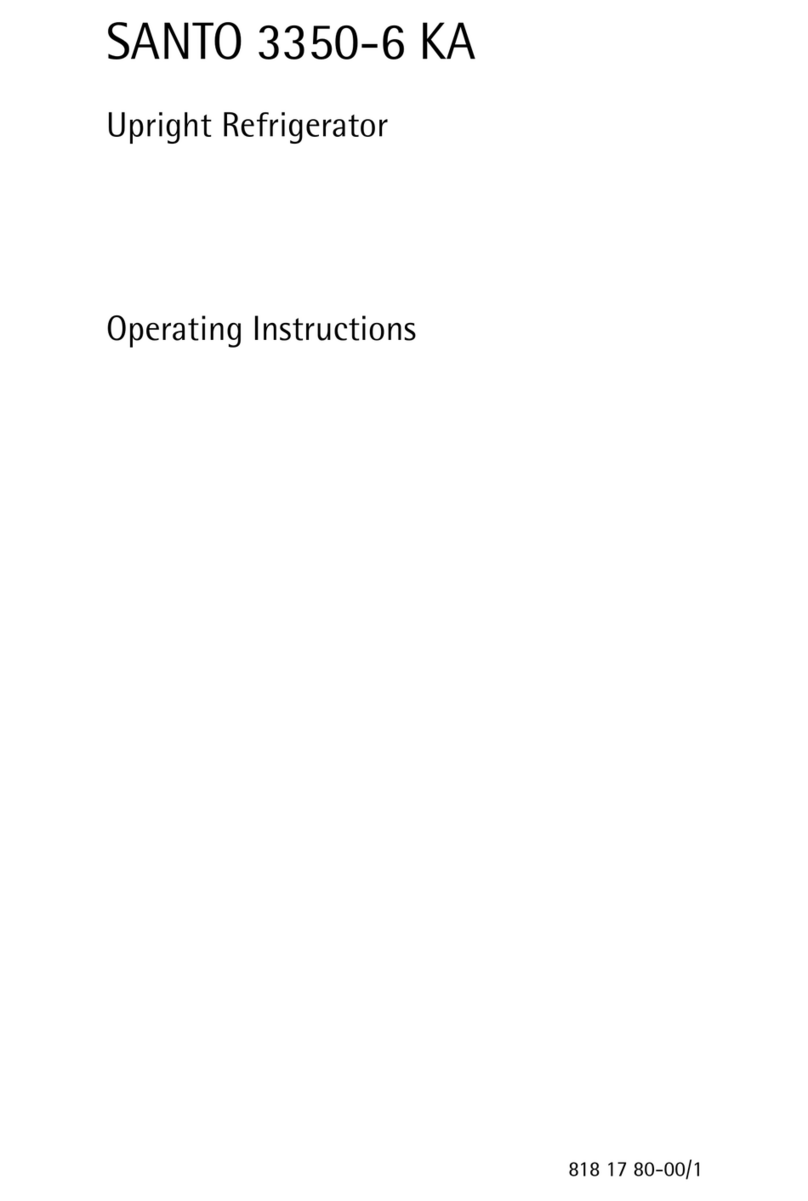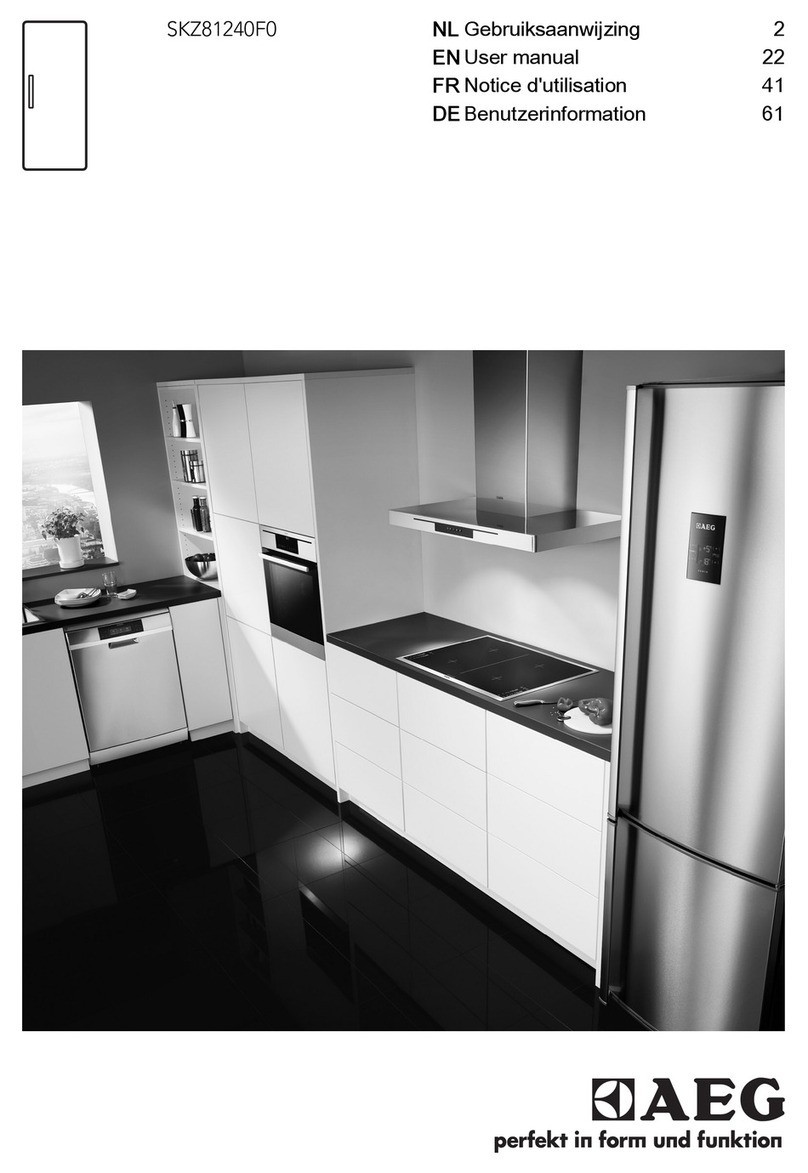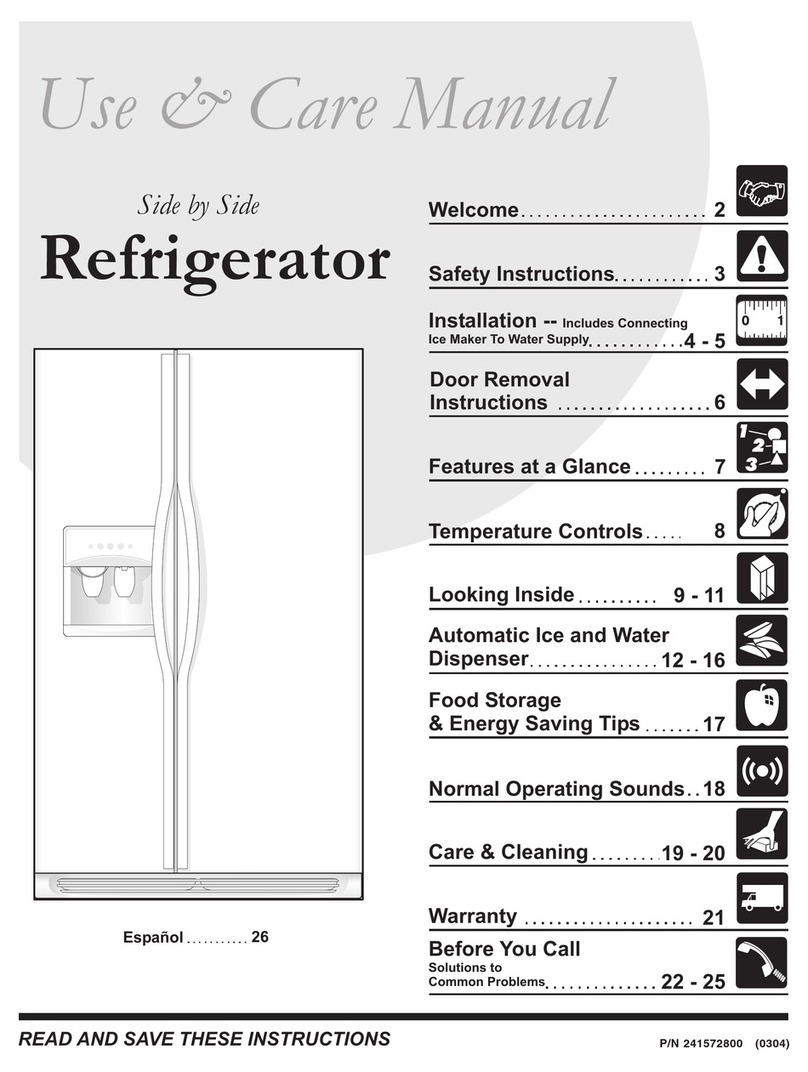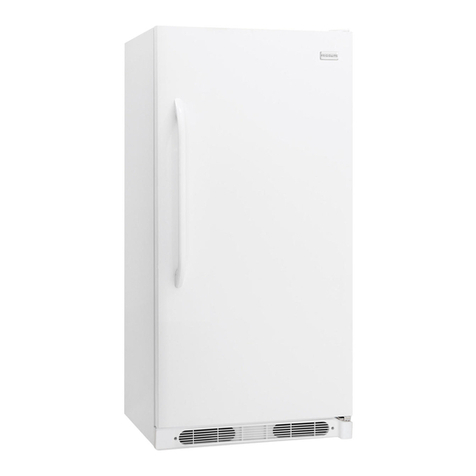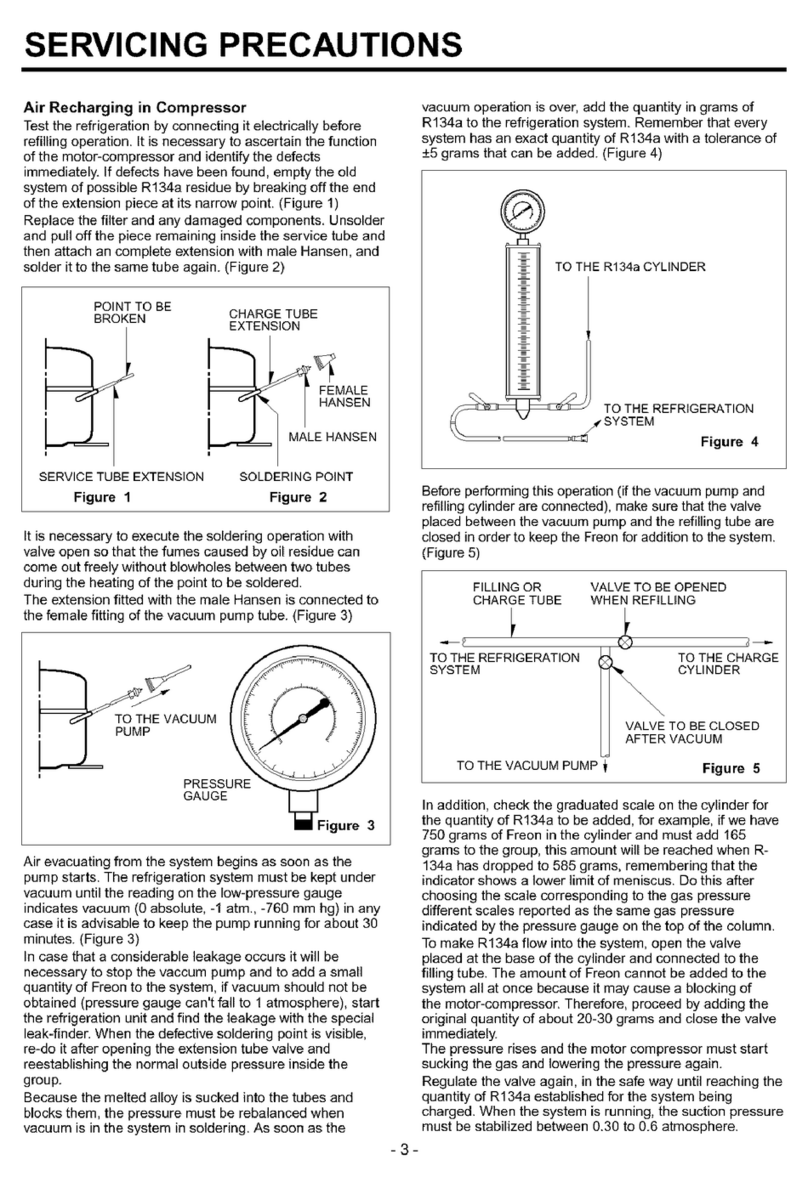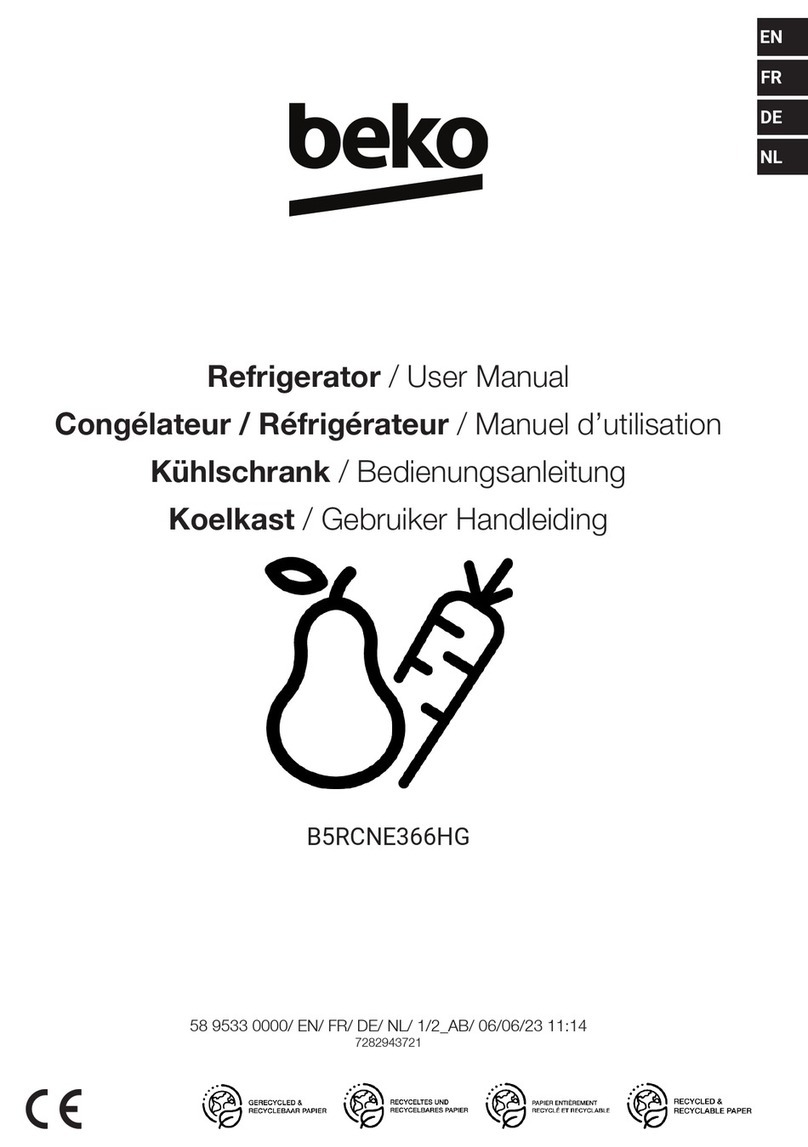3
Contents
Safety . . . . . . . . . . . . . . . . . . . . . . . . . . . . . . . . . . . . . . . . . . . . . . . . . . . . . .4
Disposal . . . . . . . . . . . . . . . . . . . . . . . . . . . . . . . . . . . . . . . . . . . . . . . . . . . .5
Appliance Packaging Information . . . . . . . . . . . . . . . . . . . . . . . . . . . . . .5
Disposal of Old Appliances . . . . . . . . . . . . . . . . . . . . . . . . . . . . . . . . . . . . .6
Remove Transport Packaging . . . . . . . . . . . . . . . . . . . . . . . . . . . . . . . . .6
Shelf holders . . . . . . . . . . . . . . . . . . . . . . . . . . . . . . . . . . . . . . . . . . . . . . . .6
Description of the Appliance . . . . . . . . . . . . . . . . . . . . . . . . . . . . . . . . . .6
Starting Up and Temperature Regulation . . . . . . . . . . . . . . . . . . . . . . .7
Lo room temperature s itch . . . . . . . . . . . . . . . . . . . . . . . . . . . . . . . . . .8
Interior Accessories . . . . . . . . . . . . . . . . . . . . . . . . . . . . . . . . . . . . . . . . .8
Storage shelves . . . . . . . . . . . . . . . . . . . . . . . . . . . . . . . . . . . . . . . . . . . . . .8
Variable inner door . . . . . . . . . . . . . . . . . . . . . . . . . . . . . . . . . . . . . . . . . . .8
Fresh Food Refrigeration . . . . . . . . . . . . . . . . . . . . . . . . . . . . . . . . . . . . .9
Free ing and Storing Fro en Food . . . . . . . . . . . . . . . . . . . . . . . . . . . . .10
Ice Pack . . . . . . . . . . . . . . . . . . . . . . . . . . . . . . . . . . . . . . . . . . . . . . . . . . . .11
Preparation of Ice Cubes . . . . . . . . . . . . . . . . . . . . . . . . . . . . . . . . . . . .11
Storage Goods Symbols/ Free ing Calendar . . . . . . . . . . . . . . . . . . . .11
Defrosting . . . . . . . . . . . . . . . . . . . . . . . . . . . . . . . . . . . . . . . . . . . . . . . . .12
Switching Off the Appliance . . . . . . . . . . . . . . . . . . . . . . . . . . . . . . . .13
Cleaning and Care . . . . . . . . . . . . . . . . . . . . . . . . . . . . . . . . . . . . . . . . . .13
Energy Saving Tips . . . . . . . . . . . . . . . . . . . . . . . . . . . . . . . . . . . . . . . . .14
Something Not Working . . . . . . . . . . . . . . . . . . . . . . . . . . . . . . . . . . . . .14
Changing the light bulb . . . . . . . . . . . . . . . . . . . . . . . . . . . . . . . . . . . . . .16
Service and Spare Parts . . . . . . . . . . . . . . . . . . . . . . . . . . . . . . . . . . . . . .17
Guarantee Conditions . . . . . . . . . . . . . . . . . . . . . . . . . . . . . . . . . . . . . . .18
Installation . . . . . . . . . . . . . . . . . . . . . . . . . . . . . . . . . . . . . . . . . . . . . . . .19
Electrical connection . . . . . . . . . . . . . . . . . . . . . . . . . . . . . . . . . . . . . . . .19
Positioning . . . . . . . . . . . . . . . . . . . . . . . . . . . . . . . . . . . . . . . . . . . . . . . . .20
Your appliance needs air . . . . . . . . . . . . . . . . . . . . . . . . . . . . . . . . . . . . .20
Reversing the door . . . . . . . . . . . . . . . . . . . . . . . . . . . . . . . . . . . . . . . . . .20
Housing dimensions . . . . . . . . . . . . . . . . . . . . . . . . . . . . . . . . . . . . . . . . .21
Instructions for building-in . . . . . . . . . . . . . . . . . . . . . . . . . . . . . . . . . . .22
Regulations, Standards, Guidelines . . . . . . . . . . . . . . . . . . . . . . . . . . . .25
